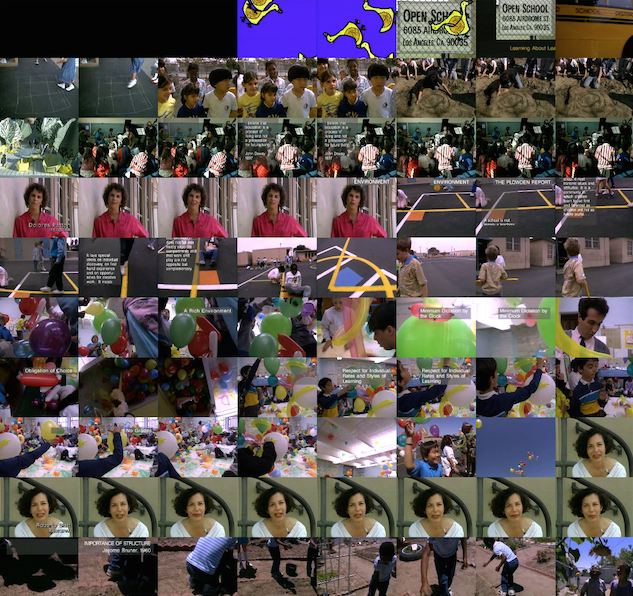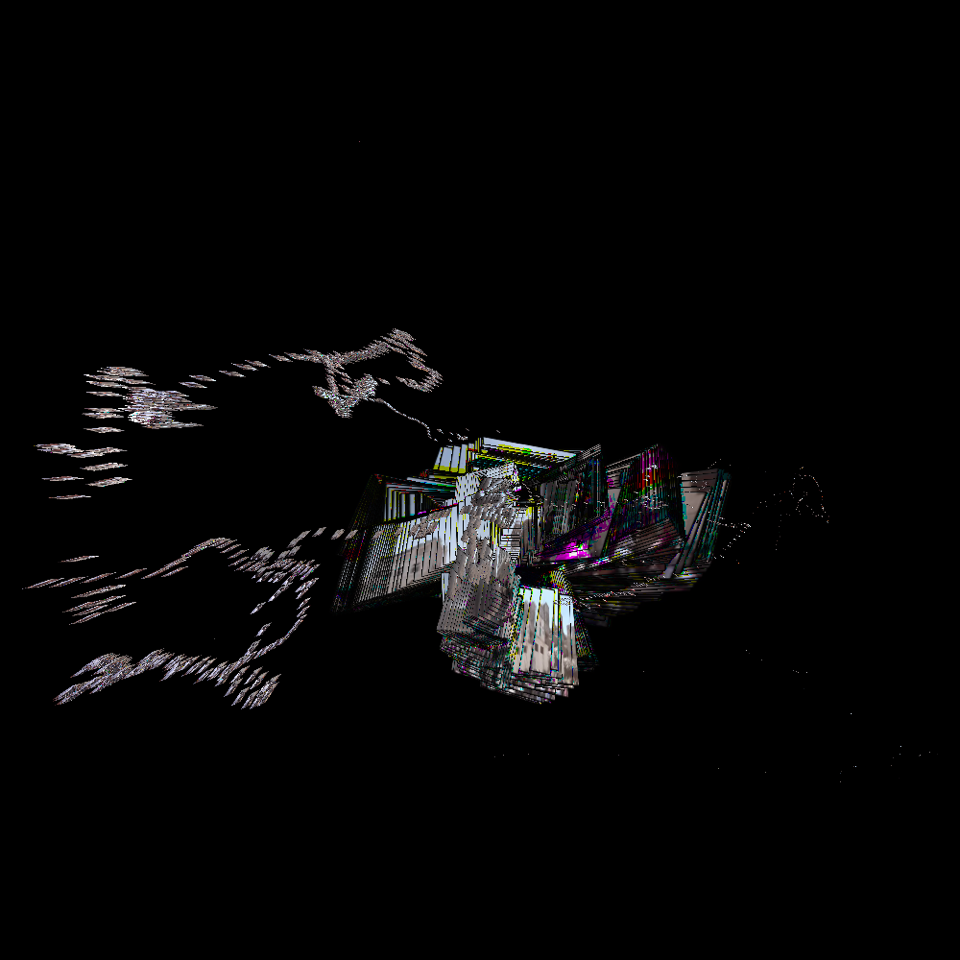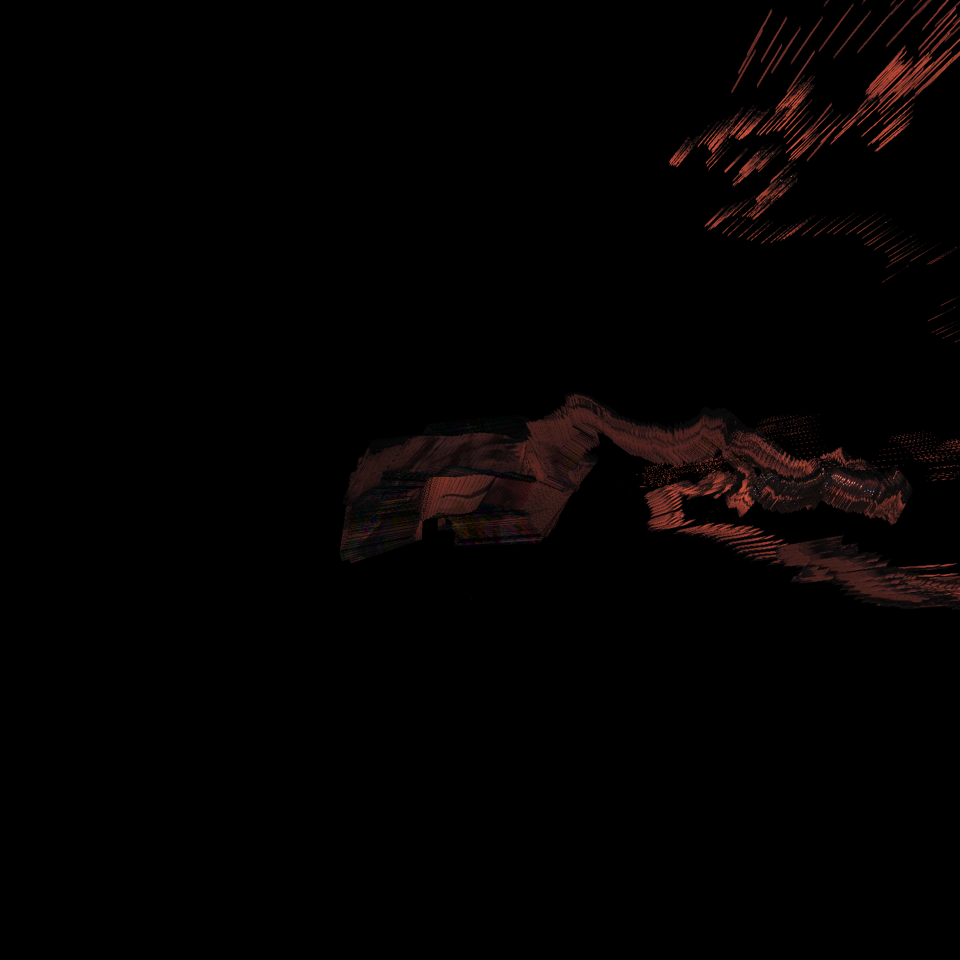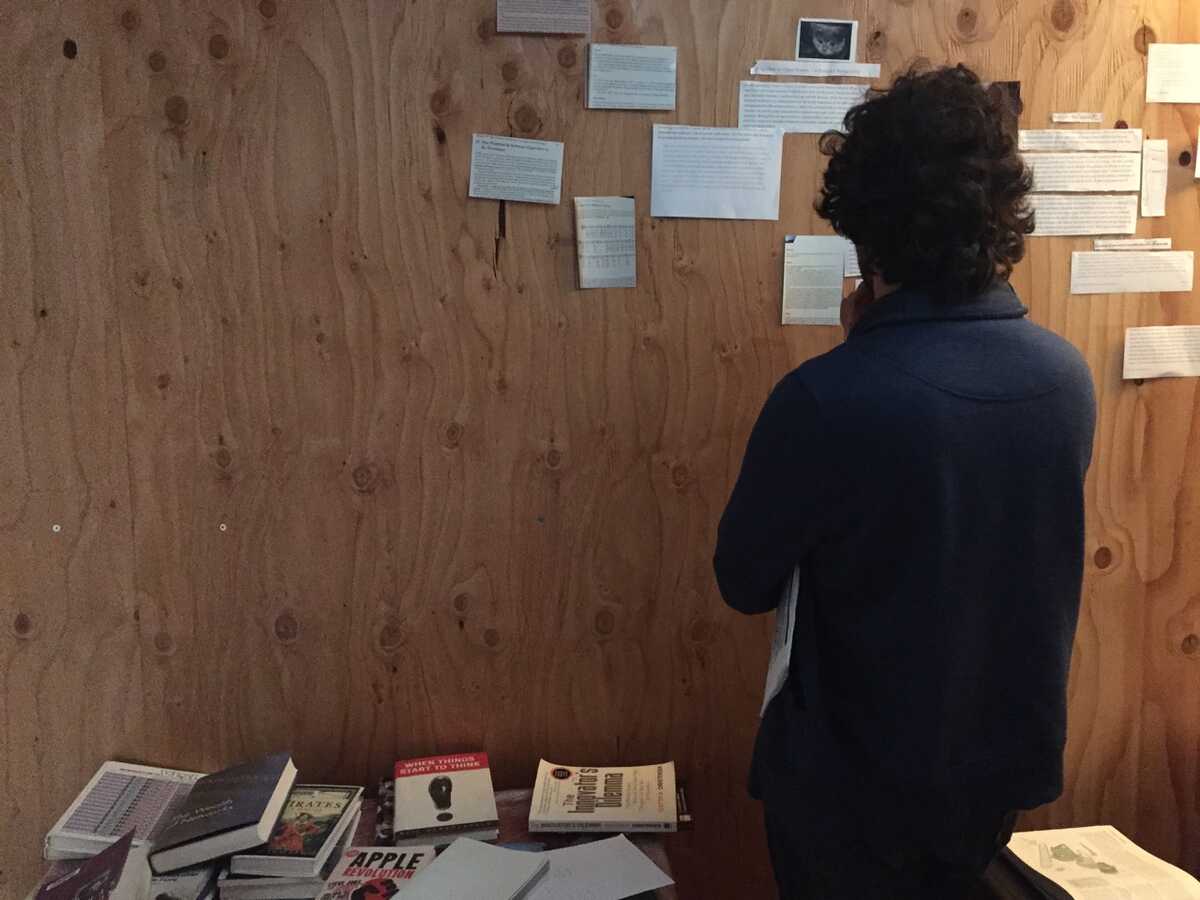From the Andreessen profile:








Balaji Srinivasan contributed the concept of the “idea maze”: you want the entrepreneur to have spent years thinking her idea into—and out of—every conceivable dead end. “Entrepreneurs want to raise money from us,” Andreessen told me, “so the natural thing when we say ‘What if you did this?’ is to tell us what we want to hear. But we don’t want to hear what we want to hear. It’s a delight when they look at you with contempt—You idiot—and then walk you through the idea maze and explain why your idea won’t work.”
I’ve been obsessed with the “idea maze.”
I feel like most of what I’ve gained from my video timeline work is maze-like conditioning.
After the vivarium night, I started rendering video columns for a potential laser-poster. For example, VPRI-0192 might be printed out like this:

My thought was (/is) that these would be sort of “raw” representations, and then when people lasered them and found interesting parts, they could print out postcards or add post-its or whatever and then I could reprint a poster with a more non-linear temporal representation that better represented our interest in the material.
When I showed this to Nagle, he suggested decreasing the framerate so that the images could be bigger. For example, the same amount of time could be represented like this:

It may seem better at first, but I had to take him down the “idea maze” to explain why I didn’t like it. I pointed him to the balloons, where with the high-framerate columns you can see a flip-book like progression where the big balloon enters, while with the big images there’s no way of knowing whether the big balloon is a new cut, or part of the same sequence. I don’t quite have words for it, but to me, the latter doesn’t respect the image/timeline dichotomy—it’s awkwardly in between, so it neither gives a useful representation of time, nor meaningful icon.
The reason I like the video columns is impossible to hard to explain without backing up a little further through my own history in the maze, which I was reminded of at Maneesh’s lab when one of his grad students showed early stages of a project around cinematic style, where “shots” were the grammatical unit of a vocabulary he was hoping would reveal Wes Anderson’s allure. He had been struggling to make a shot detector, which was also where I started back in 2011/12, when I started working with the Godard corpus. My shot detector, incidentally, is very fast (~16x speed) and seems quite accurate, but I almost never use it. It generates a multitude of metrics and representations for each cut in a video, which I assumed would be the material upon which I built user interface prototypes for working with cinema. Here’s the same VPRI-0192 video after running through segmentation. Each directory represents a cut, and there are slitscans, composite frames, optical flow tracks, HSV histograms, &c &c &c:

Unfortunately, the “cut” is too high-level, and had too many failure modes (pans, fades, zooms) to really make sense as the base unit. I contorted a codebase around cuts making Montage Interdit and found I was constantly battling the “segments” that were supposed to make everything easy. Mazes have plenty of dead ends, as well as redirects.
The other day, grossly unprepared for a Skype call with a British film scholar who has been cataloging YouTube videos around the Arab Spring, I ran some of his videos through an old script called “periphery” and was surprised with how interesting the first few results I got were, in terms of image-motion:


I still don’t know what to do with these, but after the hilbert/column explorations, I find myself looking at these images differently than I would have when I wrote the script.
— —
I think the “idea maze” must have some bearing on what research is. Trying to salvage a usage for my beleaguered shipping container, now in an Oakland warehouse, I am refashioning it as a reading/writing cut-up room. Nagle, Danyq, and Sam met me there on Tuesday armed with 20-some books very loosely around the topic of “open hardware development.” I brought a “Selphie” photo printer so we could take pictures of interesting paragraphs and post them around the space:


At the end, I think we had a better idea of what question we were asking. The form is still under development, and “augmenting” the tech with an automatic book scanner and overhead-projector highlighting/reprinting capabilities will help. I want to get into the habit of diving into idea mazes. Learning how to learn deep and complicated things, making use of space and others. Let me know if you are interested in joining future reading sessions; I will try to get into a weekly schedule.
Finally, as a trace from PARC, here’s a “blind contour”*********after he said the word “ideate” as if it were a normal thing that people casually said to each other:

Meanderingly yours,
R.M.O.